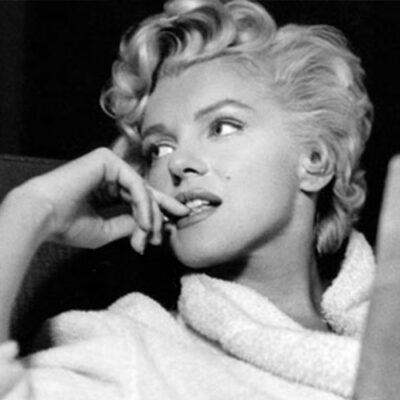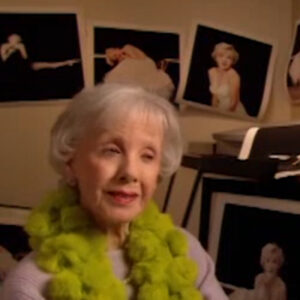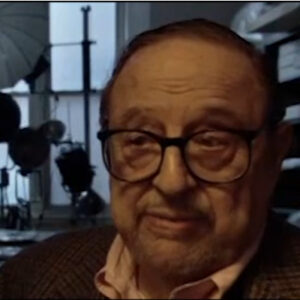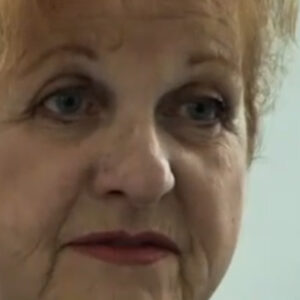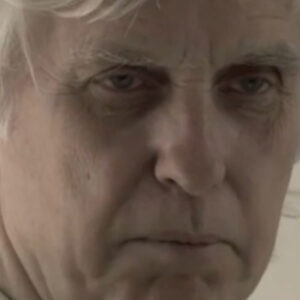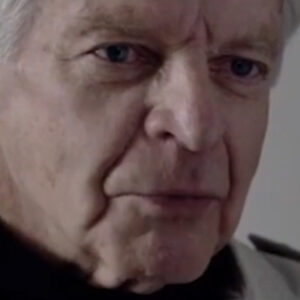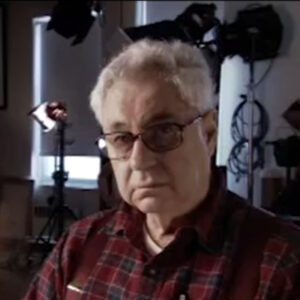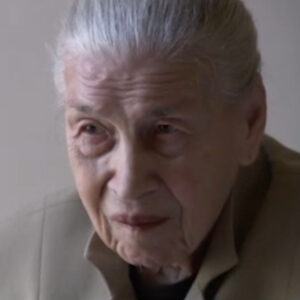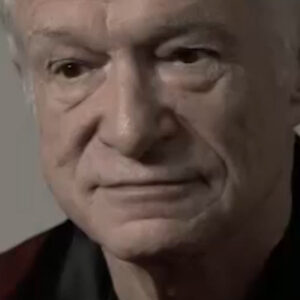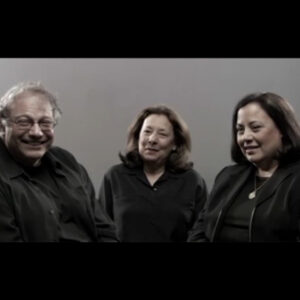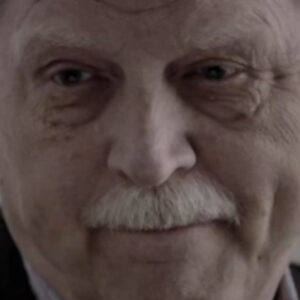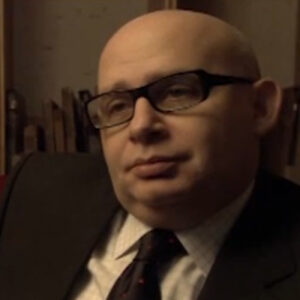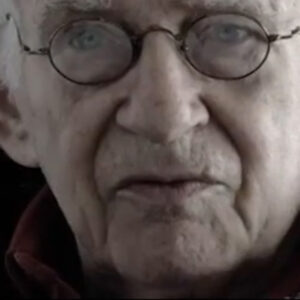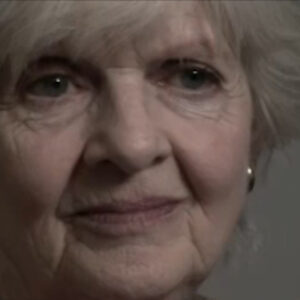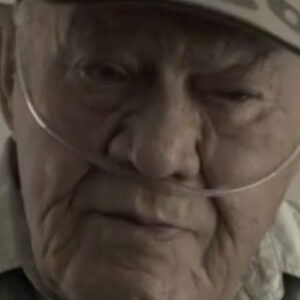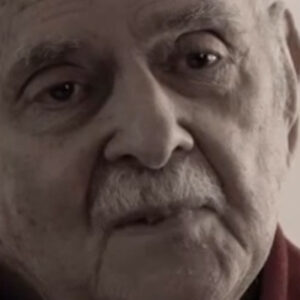Interviewer: This is 1954. That’s kind of the beginning of the big photo op. This is sort of the beginning of the big building of that kind of iconography, iconographic. I mean, when you think of it, had there been a call like this before, the big movie star with a big event that was open up to all these photographers suddenly be everywhere and to be such a pervasive image?
George Zimbel: No, no, not to my knowledge. One thing we used to do was we’d go out and meet the boats, like when the United States came into the harbor and there’d be celebrities onboard and there’d be an opportunity to photograph them. I did Billy Graham. And there is other people there. You’d go out hoping to get a beautiful portrayed. But it wasn’t an event because nothing was really happening in the photo op. This was brilliant. This was this was so well planned. They didn’t miss a beat on it and they ripped every magazine. Carry that.
Interviewer: And still.
George Zimbel: Where am I? Where was I? I I’m not leaving a lot of money to my children. I know that. But that’s okay.
Interviewer: Now you can talk about that. Isn’t that I mean, rather than being sort of magazines on, it’s just really now become the museum.
George Zimbel: Yes.
Interviewer: The collectible.
George Zimbel: Yes.
Interviewer: And yours. I mean, we can segway right into the TV show because it’s I bet Marilyn would just do a double thing that she’s not hanging off a billboard she’s had.
George Zimbel: Oh, that’s true. She’s even in one month, too. My pictures are in Luxembourg, the Museum of Art and History in Luxembourg. But.
Interviewer: Is Art and his.
George Zimbel: Yes.
Interviewer: This is all part of a life called the sort of visual culture.
George Zimbel: Yeah, that’s true. But the photo op thing is like it’s it’s become this was inviting people up, inviting people there to photograph what was happening. Most photo ops, now nothing’s happening. You might as well have a robot photographing. Nothing’s happening unless you can catch somebody doing something that they don’t want to be doing. And so that say.
Interviewer: This is quite different. This is very engineered. It was very you know, everybody was called for this time.
George Zimbel: Yeah.
Interviewer: It was part of the shoot of the film. You’re right. It wasn’t to sort of try to grab somebody on a red carpet or see if, you know, bust him in a restaurant. That’s not what this.
George Zimbel: No. And then everybody was free to shoot it the way they wanted to shoot it. I mean, I’m on one side and he’s on the other side. I saw another picture. I don’t even I can’t even connect with it. It shows a group of photographers and it shows the jewelry store in the background. And Marilyn’s here is taken sort of an elevated picture. I don’t know where that was taken or how it was taken, but it’s different. So certain. So photo ops are about control. They’re not opportunities. They’re about control. And this was engineered by the studio. Yeah. But this was. Yeah, but this was I would say this was a photographic opportunity photo op. The way it’s used now is a control thing. We want you to be here. We want you to see this. And that’s all we want you to see. I mean, in the end, just to go back dealing with Harry Truman, I mean, if you had the right credentials, you could hang with him. Nobody, you know, and photograph him. Shoot. Talking to Eleanor Roosevelt, talking to John Kennedy, perfectly natural. So, of course, they know there are photographers around, but maybe they thought the pictures wouldn’t come out. That’s another thing that’s available like photography. It didn’t get people freaked out like the flashes. But anyway, coming back to Maryland, it just it was probably the best. If you want to use the word photo opportunity, the best one ever. And it’s got worse ever since. That’s it. Yeah. Really worse it. So that makes me very unhappy. And I don’t want to do that. I don’t I don’t want to do that.
Interviewer: Yeah. I mean, the paparazzi aspect of this was certainly there, but it was also there with, again, great goodwill.
George Zimbel: Yeah.
Interviewer: I’m great. Good humor and very again, managed.
George Zimbel: Yeah.
Interviewer: And managed in there in a way that everybody kind of what they want.
George Zimbel: Yeah.
Interviewer: And plenty, plenty for plenty of room to be inventive on your own.
George Zimbel: Yeah. Well you know, you can take. You can go from there to for instance, political photography. Take John Kennedy. He did the same thing. You could be there and photograph what was happening. Nixon and not Eisenhower somewhat. But Nixon wanted control. He didn’t want you to close. He didn’t want you to do this. He didn’t want you to do that. You could stand outside the door and trees, your three trees. Harry Truman would send coffee out so that that feeling. Of welcome was that night also. So that was important.
Interviewer: So now this. Now the the shift up to the east.
George Zimbel: All right, ServiceNow. OK. So the shift is this. First of all, I got to go tell you how far things have moved. It’s a very prestigious poster company that did my one of my pictures beautifully. And they wanted to use one of the Marilyn images and they had it laid out and it would have been beautiful. And the company that controls the licensing of Maryland’s image said, we don’t want you to publish it. We have too many Marilyns out there now. That’s not the reason. The reason was that I didn’t license to them. OK, so in younger period in my life, I would have fought like blazes over this. I have so many things I want to work on and that wasn’t one of them. My thing is not making posters, pictures. My thing is making fine art prints. So I decided that was a conscious effort, a conscious decision. Don’t don’t do it. To heck with it. We won’t do it. And but but the the whole thing of these photographs moving into the fine art area era area, rather, is very important, because I’ll tell you something. I love books and I love magazines. But, boy, there’s nothing like coming into a museum or an auction house or somewhere like that and seeing a beautiful print up on the wall that you can get this close to and soak it in. And you. And you realize that making archival prints of these things means that those prints are gonna be viewable easily. 300 is assuming that the world is still extant three, 400 years from now. Can you imagine somebody say, oh, you know, it’s like us looking at something that was done in the 80s, 90s. It was a completely different era. Completely different. Oh, cameras. Those cameras won’t be extant anymore. The ones that are in the background. So.
Interviewer: These are a record of an era, the record of a time of a type of technology. And a record of the type of approach to image make.
George Zimbel: Yes.
Interviewer: That is.
George Zimbel: Yeah. Yeah.
Interviewer: I have the second.
George Zimbel: Right. And it’s in that period of history is so short. It just makes me laugh when people say, oh, will you print your own print. You can make. I don’t. I don’t edition my prints. You can make hundreds. I don’t tell me I can make hundreds of prince of something. I’m not a one hour photo. I don’t sit in there and crank them out. It’s a process. And I’ll tell you something else. Every time you go to print, it’s different. You can have all the things in the logbook that you want. Marilyn’s dress, so many things and a filter. This and this. And this. And dodge that. And then you go the next time something’s changed and you really have to start all over again. I mean, not all over again, but you know that there’s certain balances that you have to get. And it’s and it’s it’s a renewal each time. And if it works, you’re happy. And if it doesn’t, you go home grumpy.
Interviewer: But the organic aspect of that that communion with that subject. Yeah. And there was chemicals in that paper in that moment. I mean, there’s something in that that I just I don’t know. We we can’t talk about.
George Zimbel: Absolutely. Absolutely. The other day I had a very good photographer in Montreal come to my studio for the fifth time begging me to photograph my lab. And I kept saying, no, I don’t want you to do it. These are my friends. So I don’t want you to do it because it’s my private space. Then I said, oh, well, things are changing so rapidly. It’s important. So he went in there. He was in there an hour and a half. I didn’t even go in to look and see what he was doing. I’m not sure I know. I want to know what he was doing. But he photographed my enlargers and the trays and he said, this is post-industrial. You know.
Interviewer: It was industrial.
George Zimbel: Yeah. So anyway, that’s that’s the story.
Interviewer: And I think I just would also just like this, I haven’t seen one more moment, sort of just about your life. Sorry. The photographer and the subject. And just what that like just what that means.
George Zimbel: Well, there is a certain professionalism, parentheses, comfort that somebody who photographs well has. I’m not sure what it is like. I told you. Harry Truman, Mrs. Roosevelt. She didn’t care if there was a camera sticking in her face. She was just do what she did. Stevenson was wonderful. He just was. Eisenhower was fine. He was tranquil. Nixon was so uptight, uptight all the time. All the time. I know I’m talking about old history now because I’ve been away for a long time. But nevertheless, the beauty of somebody who is a professional and is comfortable and wants you to share something with them. That’s terrific. That’s terrific. And and if I’m lucky enough to photograph that and it could be a child. It could be Marilyn. It could be a construction worker. What the hell’s the difference?
Interviewer: Well, Marilyn certainly had that.
George Zimbel: Yes.
Interviewer: She had that. I think she loved the show camera far even more than the movie.
George Zimbel: She did. She loved it. And she. I mean, you can tell when even in the Korean stuff, when she’s over in Korea, you know, like, she just was such a happy lady, too. She was bringing enjoyed all these guys, you know. So that’s that’s that’s that’s terrific. And in its rare.

